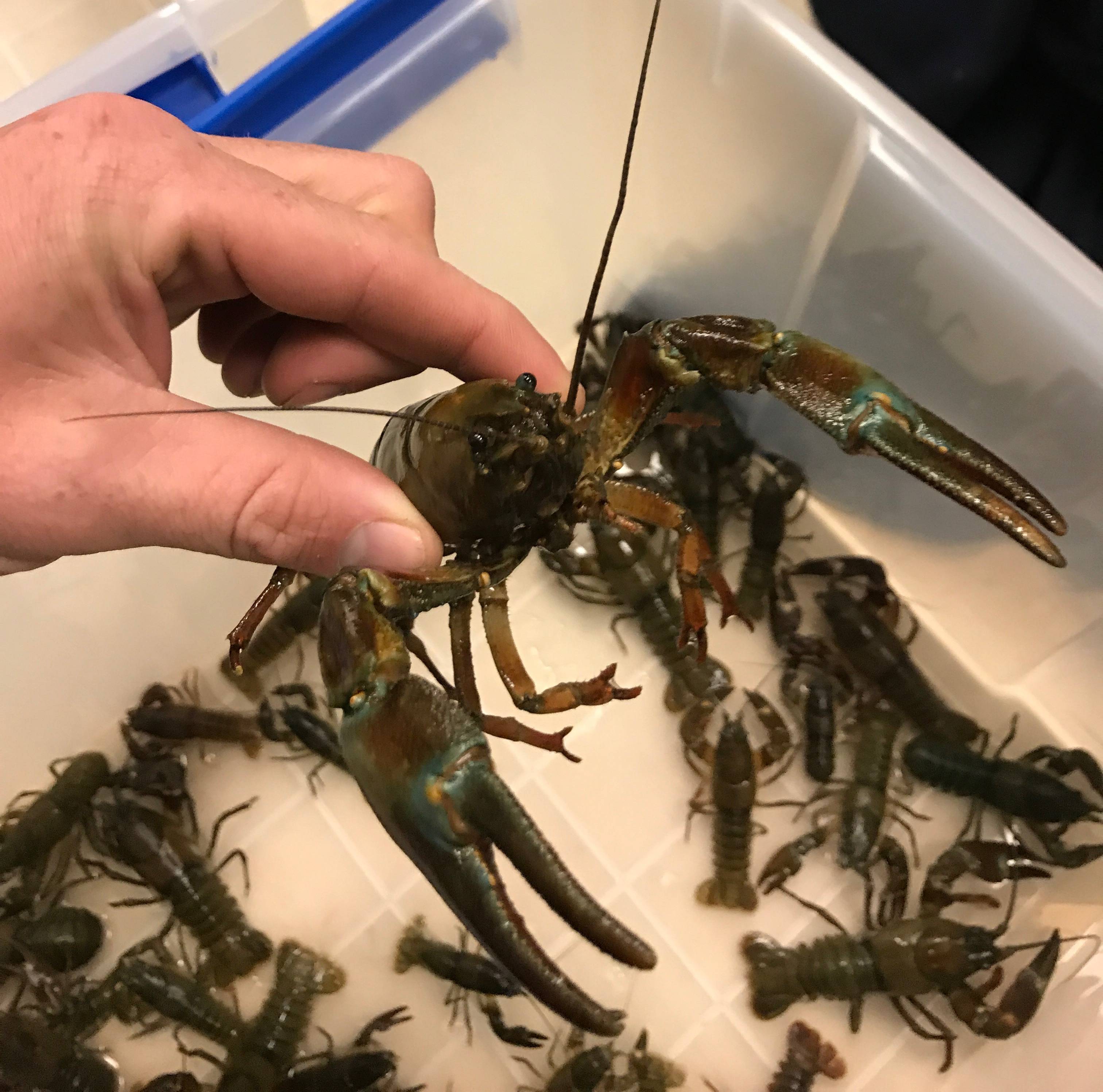Global Change and Invasive Species
Hydrology, water temperature, and biodiversity are changing worldwide due to climate warming, damming, and agricultural diversion. As a result, many streams are experiencing warm, low flows and introductions of non-native species. We study the impact of low flows and invasive species on stream communities. Projects include the impact of drying on silk production and architecture ofnet-spinning caddisfly larvae (Hydropsychidae), population dynamics and physiology of giant salmonflies (Pteronarcyidae), and ecosystem engineering of invasive crayfish. Invasive species are one of the world's most pressing environmental problems, and many invasive species alter formation of physical environments and foodwebs. Crayfish are one of the most widespread freshwater invaders that are known to engineer riverbeds through their burrowing activities. We investigate how crayfish influence gravel sorting, fine sediment suspension, and riverbed topography using field and laboratory experiments.

Signal crayfish.
Our research on these topics is tightly tied to conservation and management. Although a growing number of projects seek to restore degraded freshwater ecosystems, the biological and geomorphological factors driving the successful recovery of ecosystem functions in restoration sites are complex and often context-specific. We are investigating several restoration approaches used in freshwater ecosystems. We study the ability of tributaries to provide flow and temperature refuge to mainstem invertebrates. We also study how restoration tools such as beaver dam analogs (BDAs) might assist managers in addressing low-flows. BDAs affect not only hydrology and geomorphology, but also ecology. We use field experiments and observations to learn how BDAs affect ecosystem processes, such as invertebrate secondary production, and habitat for invertebrates and fish, such as Arctic Grayling. Other projects investigate how management of invasive lake trout can alter foodwebs and influence populations of amphipods, which are a key prey item of native cutthroat trout.
Example publications
Check out the publications page for additional information.
- Reinert, J. H., L. K. Albertson, and J. R. Junker. 2022. Influence of biomimicry structures on ecosystem function in a Rocky Mountain incised stream. Ecosphere 13:e3897. [View as PDF]
- Briggs, M. A., L. K. Albertson, D. R. Lujan, L. M. Tronstad, H. C. Glassic, C. S. Guy, and T. M. Koel. 2021. Carcass deposition to suppress invasive lake trout causes differential mortality of two common benthic invertebrates in Yellowstone Lake. Fundamental and Applied Limnology 194(4):285-295. [View as PDF]
- Anderson, H. E., L. K. Albertson, and D. M. Walters. 2019. Water temperature drives variability in salmonfly abundance, emergence timing, and body size. River Research and Applications 35(7):1013-1022. [View as PDF]
- Albertson, L. K., and M. D. Daniels. 2016. Resilience of aquatic net-spinning caddisfly silk structures to common global stressors. Freshwater Biology 61:670-679. [View as PDF]
- Albertson, L. K., B. J. Cardinale, S. C. Zeug, L. R. Harrison, H. S. Lenihan, and M. A. Wydzga. 2010. Impacts of channel reconstruction on invertebrate assemblages in a restored river. Restoration Ecology 19(5):627-638. [View as PDF]
